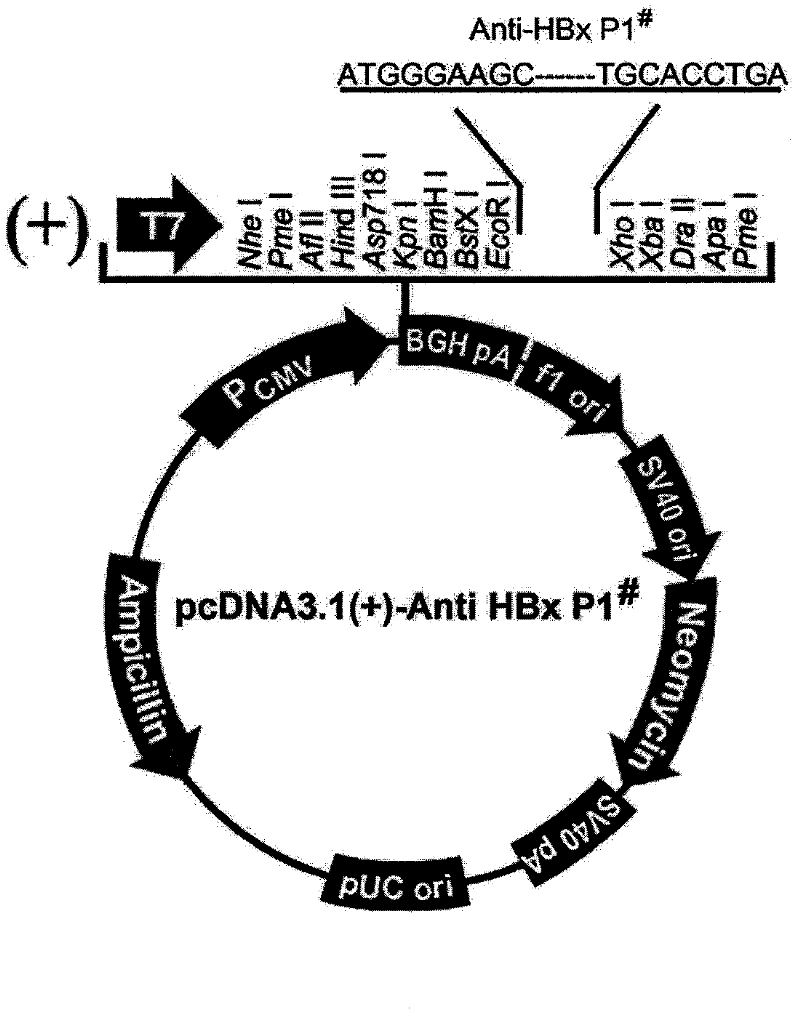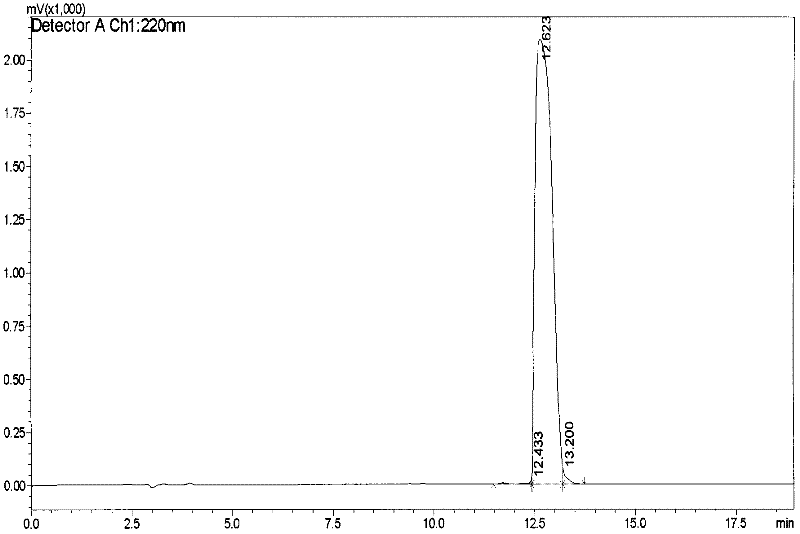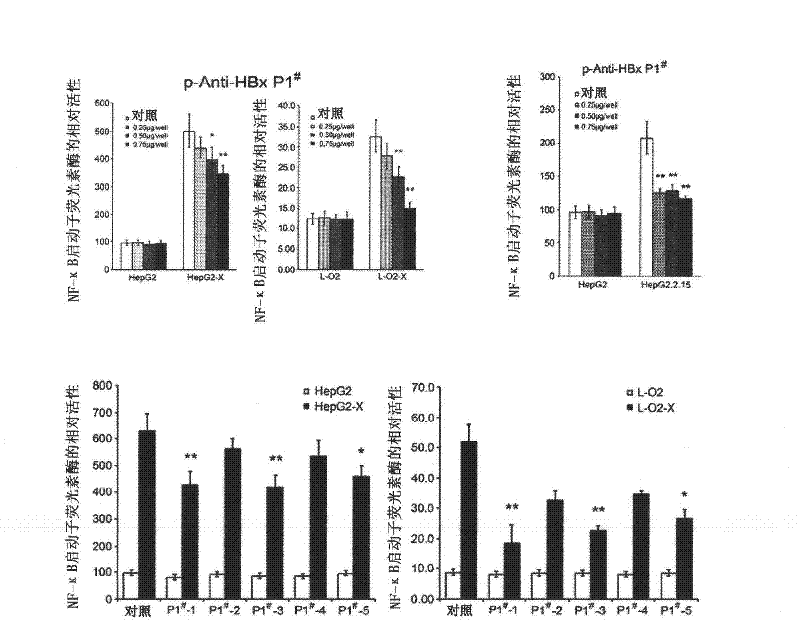Polypeptide drug against hepatitis B virus X protein (HBx)
A hepatitis B virus and drug technology, which is applied in the direction of viral peptides, antiviral agents, and antitumor drugs, can solve the problems of short half-life of polypeptide fragments, affecting pharmacodynamic effects, and difficulty in discovering polypeptide drugs, and achieve obvious drug discovery. The effect of dynamism
- Summary
- Abstract
- Description
- Claims
- Application Information
AI Technical Summary
Problems solved by technology
Method used
Image
Examples
Embodiment 1
[0100] Synthetic polypeptide functional fragment anti-HBxP1#:
[0101] The present invention has synthesized the polypeptide (hereinafter referred to as anti-HBxP1) whose amino acid sequence is Gly-Ser-Ala-Val-Met-Phe-Ser-Ser-Lys-Glu-Arg-Gly (SEQ ID NO: 1) by means of artificial synthesis. #). The preparation of the polypeptide adopts a solid-phase synthesis method, such as using an AAPPTECAPex396 polypeptide synthesis instrument (purchased from Hong Kong Universal Analytical and Testing Instrument Co., Ltd.), in a closed explosion-proof glass reactor to make amino acids according to the sequence shown in SEQ ID NO: 1, From C-terminus-carboxyl-terminus to N-terminus-amino-terminus, this refers to the first amino acid to be added to the amino acid sequence Gly-Ser-Ala-Val-Met-Phe-Ser-Ser-Lys-Glu-Arg-Gly The monomer is C-terminal Gly, then Arg, then Glu, until the last Ser and N-terminal Gly, which are continuously added, reacted, synthesized, and operated to finally obtain the...
Embodiment 2
[0109] Two methods are used to detect the anti-HBx activity of the polypeptide in Example 1 in vitro: the first method is to use molecular cloning technology to clone the cDNA expressing the polypeptide in Example 1 into the eukaryotic expression vector pcDNA3.1 On (+), through gene transfection, the purpose of expressing the studied polypeptide in liver cancer cells is realized, and then the effect of the researched polypeptide on inhibiting HBx is observed; the second method is to use artificially synthesized polypeptides and directly add them to cultured liver cancer cells In the culture medium, observe the effect of polypeptide on inhibiting HBx.
[0110] There are two kinds of liver cancer cells used in the experiment: one is liver cancer HepG2-X cells constitutively expressing HBx (hepatoma HepG2 cells stably transfected with HBx); the other is liver cancer HepG2.2.15 cells constitutively expressing the whole gene of hepatitis B virus (hepatoma HepG2 cells stably transfe...
Embodiment 3
[0190] HepG2-X cells or HepG2.2.15 cells in the logarithmic growth phase were digested with trypsin to make a cell suspension, the number of cells was calculated, and the cells were diluted to 1×10 with sterile normal saline. 7 cells / ml and stored in ice water. Twelve 4- to 6-week-old female BALB / C nude mice were then randomly divided into 2 groups: ① Control group, subcutaneously inject 0.2ml of the above-mentioned diluted cells in the armpit of the right forelimb of each mouse, and only inject 0.5 ml sterilized distilled water (without polypeptide drugs); ② experimental group (administration dose is 10 mg / kg body weight). Subcutaneously inject 0.2ml of the above-mentioned diluted cells into the armpit of the right forelimb of each mouse, and after 7 days of injection, the tumor volume (V=L×W 2 ×0.5) up to 100mm 3 , and then subcutaneously inject the above polypeptide drugs (dissolve the freeze-dried polypeptide drugs with 0.5ml sterilized distilled water), inject once ever...
PUM
 Login to View More
Login to View More Abstract
Description
Claims
Application Information
 Login to View More
Login to View More - R&D
- Intellectual Property
- Life Sciences
- Materials
- Tech Scout
- Unparalleled Data Quality
- Higher Quality Content
- 60% Fewer Hallucinations
Browse by: Latest US Patents, China's latest patents, Technical Efficacy Thesaurus, Application Domain, Technology Topic, Popular Technical Reports.
© 2025 PatSnap. All rights reserved.Legal|Privacy policy|Modern Slavery Act Transparency Statement|Sitemap|About US| Contact US: help@patsnap.com



